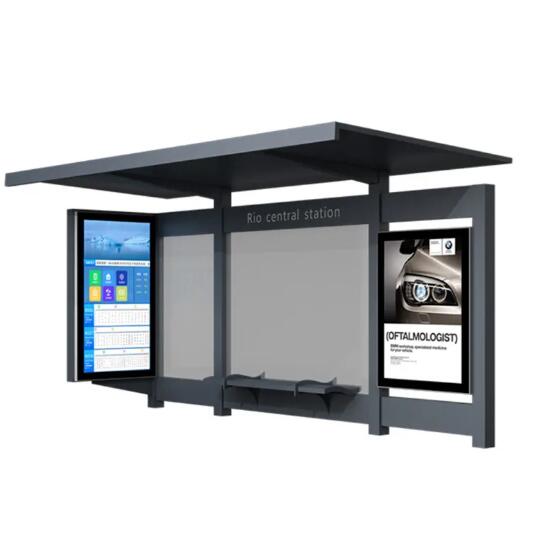The Evolution of Outdoor Street Bus Stop Shelters with Mupi Advertising Display Light Boxes
2024-08-20
Public transportation is a vital part of urban infrastructure, and bus stop shelters play a crucial role in making the commuting experience more comfortable and convenient. In recent years, the integration of Mupi (Urban Furniture with Public Information) advertising display light boxes into bus stop shelters has transformed these structures from simple waiting areas into dynamic platforms for communication and advertising. In this blog, we'll explore the evolution of outdoor street bus stop shelters with Mupi advertising display light boxes and their impact on urban landscapes.
The Rise of the Modern Bus Stop Shelter
Bus stop shelters have come a long way from their basic beginnings. Initially designed to provide commuters with protection from the elements, these shelters were simple structures offering minimal comfort. However, as cities grew and public transportation became more integral to urban life, the need for more functional and aesthetically pleasing bus stop shelters became apparent.
Modern bus stop shelters are now equipped with a range of features designed to enhance the commuter experience. These include seating, weather protection, real-time transit information, and, increasingly, advertising displays. The integration of Mupi advertising display light boxes has added a new dimension to these shelters, making them not only functional but also engaging.
The Role of Mupi Advertising Display Light Boxes
Mupi advertising display light boxes are a type of urban furniture designed to provide both public information and advertising space. These light boxes are typically backlit, making them highly visible both day and night. When integrated into bus stop shelters, they serve multiple purposes:
1. Information Dissemination: Mupi displays can be used to share important public information, such as maps, transit schedules, safety messages, and community announcements. This helps commuters stay informed while they wait for their bus.
2. Advertising Opportunities: The high visibility of Mupi light boxes makes them ideal for advertising. Brands can reach a captive audience of commuters, making these displays a valuable tool for marketing campaigns. The dynamic and illuminated nature of the ads ensures they stand out in the urban environment.
3. Enhancing Urban Aesthetics: Mupi light boxes add a modern, polished look to bus stop shelters, contributing to the overall aesthetic of the city. With sleek designs and high-quality materials, these shelters become an integral part of the urban landscape, blending functionality with visual appeal.
The Benefits of Mupi-Equipped Bus Stop Shelters
The integration of Mupi advertising display light boxes into bus stop shelters offers several benefits:
- Increased Revenue: Cities can generate additional revenue by selling advertising space on Mupi displays. This revenue can be reinvested into public transportation infrastructure, improving services for commuters.
- Improved Commuter Experience: The presence of real-time information and engaging advertisements can make waiting for the bus a more pleasant experience. Commuters are more likely to be informed and entertained while they wait.
- Sustainability: Many modern Mupi light boxes are equipped with energy-efficient LED lighting and can be powered by renewable energy sources like solar panels. This reduces the environmental impact of these installations.
- Enhanced Safety: The illumination provided by Mupi light boxes can improve safety at bus stops, especially at night. Well-lit shelters are less likely to attract criminal activity and provide a sense of security for commuters.
Conclusion
The evolution of outdoor street bus stop shelters with Mupi advertising display light boxes reflects the changing needs of modern cities. These structures have become more than just waiting areas—they are now multifunctional urban spaces that provide information, entertainment, and revenue opportunities. As cities continue to grow and develop, the role of Mupi-equipped bus stop shelters is likely to expand, offering even more benefits to commuters and urban planners alike.



